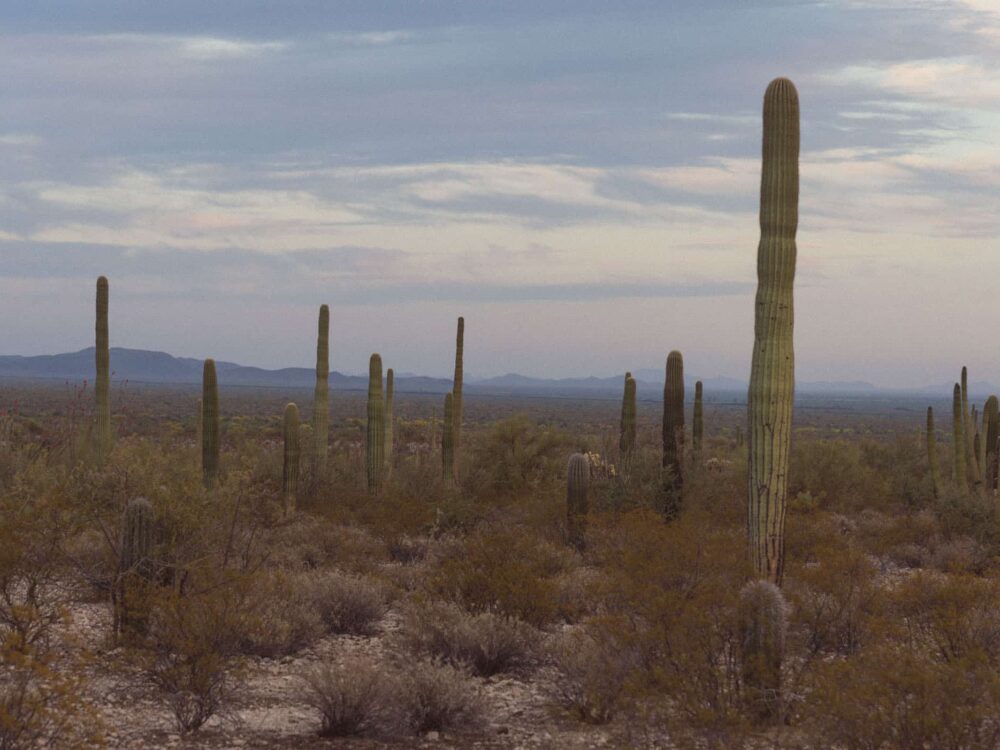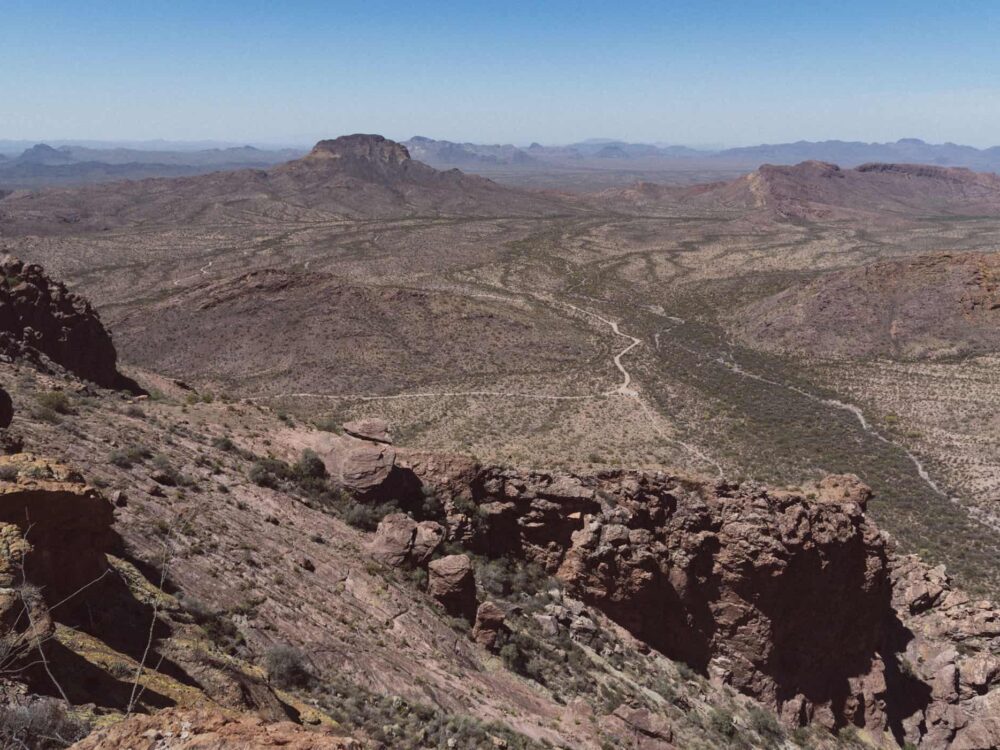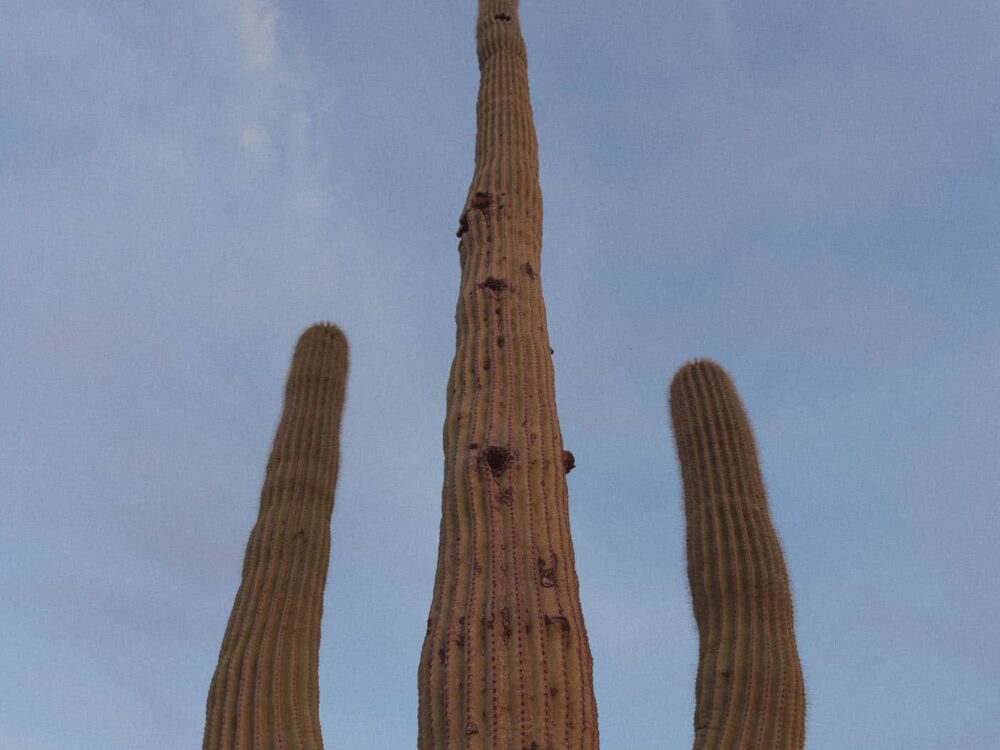Hike & Walk | Organ Pipe Cactus NM | United States
3 Great Hikes in Organ Pipe Cactus National Monument
Text | Anninka Kraus
Photography | Tobias Kraus

US Arizona
There are two sides to Organ Pipe Cactus National Monument. For one, the park is a great place for visitors to explore the remote and undeveloped wilderness of the Sonoran Desert that spans southern Arizona and northwestern Mexico. On your visit to the park, you can explore one of Earth’s most fragile major ecosystems, an environment so unique that Organ Pipe Cactus National Monument was awarded Unesco International Biosphere Reserve status in 1976. Far less busy than other national parks, Organ Pipe promises solitude and wilderness adventures in a stunning desert setting.
When I think of a desert, I always picture the Namib in Namibia. A vast expanse of sand piled up into giant dunes. The Sonoran Desert, on the other hand, is a Green Desert and very different to the Namib. This rocky landscape of mountains, valleys, and gorges is covered with a variety of plants – the park’s namesake organ pipe cactus, senita cactus, giant saguaros, prickly pear, and ocotillos – and in spring, these prickly plants are decorated with colourful blossoms.
Then there are the brilliant sunsets – since no matter what kind of desert, sunsets, when there’s much sand or dust in the air, are always magical. In Organ Pipe, it was almost as if all cacti waved their prickly arms like magical wands in unison, and a curtain of gold dropped on the desert. Minutes later, they waved their wands again, and the mysterious glow of the Blue Hour settled upon the landscape.
But there’s another, more sinister side of Organ Pipe National Park. After 2002, when the park made headline news when 28-year-old park ranger Kris Eggle was shot by members of a Mexican drug cartel whilst on duty in the park, Organ Pipe was dubbed the “most dangerous national park” in the US. Most of the area was closed down after the incident, and some sections of the park have reopened only recently.
These issues remain mostly invisible to visitors though, and the only visible sign of any alleged danger nowadays is Trump’s new 9-meter-high steel-barred border wall that runs along the 30-mile borderline that the park shares with Mexico. That, and several signs posted along the park roads that still ask you to be vigilant of drug and human trafficking and illegal immigration from neighbouring Mexico.
We were told it’s highly unlikely that you will run into any trouble if you stay on marked tracks, but if you feel uneasy about exploring the park on your own, you may want to participate in a free ranger program.
jump ahead.
Out & back trail | 1.5-2 hours
2. Estes Canyon-Bull Pasture Trails
Loop trail | 1.5-2 hours
Loop trail | 30-40 min









The brilliant, colourful desert sunsets in Organ Pipe Cactus National Monument.
what to expect.
The beautiful scenery of the Sonoran Desert, a Green Desert that spans Arizona and northwestern Mexico and is covered with the park’s namesake organ pipe cactus and many other plants
Plants and animals that have adapted to adapted to heat and water scarcity
An extensive trail network that makes this desert wilderness accessible to hikers
3 epic hikes & walks in Organ Pipe Cactus National Monument.
location & park information.
Scenic Drives in Organ Pipe Cactus National Monument: Organ Pipe Cactus National Monument has two scenic drives, Puerto Blanco Drive (66km/41 miles; approx. 4-5 hours) and Ajo Mountain Drive (34km/21 miles; approx. 2 hours). Both drives are graded gravel roads suitable for 2WDs, but the Puerto Blanco Drive requires high clearance after Pinkley Peak. Note that trailers, buses, and RVs over 25 feet (8 meters) are not permitted on either drive.
We opted for the incredibly scenic Ajo Mountain Drive, which starts across the highway from the visitor centre and has a number of fabulous hiking trails starting from pull-outs off the scenic drive. Following the rise and fall of the desert floor littered with the park’s namesake cactus, this drive twists and turns through the Ajo Range foothills and is a wonderful introduction to Joshua Tree National Monument.
The Ajo Mountain Drive is 2WD accessible, but follows a one-way road, so you’ll need to allow enough time to finish the whole drive.
Best Hikes in Organ Pipe Cactus National Monument: Additionally, you can explore a network of well-maintained hiking trails. Many of the park’s best walks can be accessed from Ajo Mountain Drive, including the Arch Canyon and Estes Canyon-Bull Pasture trails. The Desert View Trail is a sweet little walk starting from Twin Peaks Campground and offers incredible desert sunset views.
Best time to visit: The sunny, warm winter months between December and March are optimal to visit Organ Pipe Cactus National Monument. It’s still wise to pack warm layers, because being a desert, surprisingly chilly nights follow on a hot day at any time of the year. Avoid the excessive heat in summer when temperatures regularly soar over 100°F (38°C).
Plan your visit: The entrance fee is $25 per vehicle for a 7-day period unless you have the annual America the Beautiful Pass (https://www.nps.gov/planyourvisit/passes.htm) ($80/1 year/2 pass owners), which covers entrance fees at all national parks and many other recreational areas in the States.
Camping in Organ Pipe Cactus National Monument: There are two campgrounds in the park. Twin Peaks Campground near Kris Eggle Visitor Center offers lovely, very spacious RV and tent camping sites; advance reservations are required through recreation.gov or by calling 1-877-444-6777. No hookups, but potable water, dump points, flush toilets, and free solar showers are available. Twin Peaks Campground is open year-round.
Alamo Campground is a basic tent and small vans-only campground (no trailers or motorhomes) located down a 5-kilometer (3 miles) dirt road with 4 first-come, first-served sites (self-register at the campground). No water or fires.

